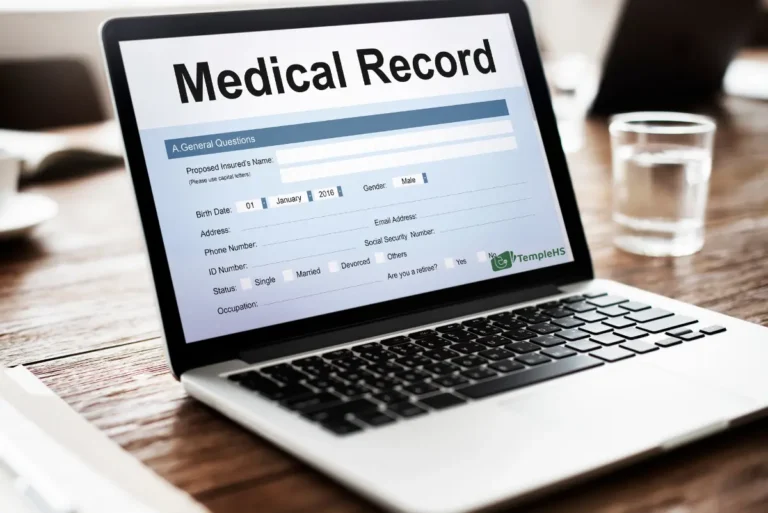Electronic Medical Records (EMR) have transformed the healthcare sector by digitizing patient information. This shift from paper-based records to electronic systems has streamlined processes and improved the accuracy and accessibility of patient data. EMRs play a crucial role in modern healthcare, enabling medical professionals to track patient history, diagnoses, treatments, and outcomes efficiently.
This post will provide a detailed definition of EMR, explain how it is used, and explain why it is important in the health sector.
What is an EMR, and How Does it Work?
An Electronic Medical Record (EMR) is a digital system that stores patients’ medical and treatment histories within a healthcare provider’s practice. Unlike paper records, EMRs allow for streamlined access to patient data, facilitating more coordinated and efficient care. They contain comprehensive information such as medical history, diagnoses, medications, treatment plans, immunization dates, allergies, radiology images, and laboratory results.
The functioning of an EMR system begins with the digitization of patient records. Healthcare providers enter information into the EMR during clinical encounters, which then becomes part of a digital record that can be accessed quickly and securely by authorized personnel. This process eliminates the need for physical paper files, reducing storage space and improving the efficiency of record retrieval.
EMRs are designed to be used within a single healthcare organization, allowing different departments to access and share patient information easily. This integration supports a more coordinated approach to patient care, as all relevant health information is consolidated in one place. For example, a physician can quickly review a patient’s history before prescribing treatment, and any new information added to the EMR is immediately available to other healthcare professionals within the organization.
Also, EMRs can be integrated with other health information systems, such as pharmacy management, laboratory information systems, and radiology departments. This integration ensures that all aspects of a patient’s care are informed by up-to-date and comprehensive data, leading to better-informed decision-making and improved patient outcomes.
What Are the Types of EMR Systems?
1. Standalone EMR Systems
These are basic systems that manage electronic medical records within a single practice or clinic. They focus on digitizing patient charts, recording diagnoses and treatments, and managing appointment schedules. Small practices often use standalone EMRs due to their simplicity and lower cost compared to more complex systems.
2. Integrated EMR Systems
These systems offer more advanced features than standalone EMRs, as they integrate with other healthcare management functions like billing, scheduling, and practice management. Integrated EMRs are part of larger practice management systems that provide a comprehensive suite of tools to manage various aspects of patient care and clinic operations.
3. Specialty-specific EMR Systems
These are designed for particular medical specialties, such as cardiology, dermatology, or psychiatry. They include features and templates tailored to the unique needs and workflow of each specialty, helping specialists document patient care more efficiently and effectively.
4. Cloud-based EMR Systems
These EMRs are hosted on remote servers and accessed via the Internet. They offer the advantage of being accessible from anywhere, reducing the need for onsite IT infrastructure and maintenance. Cloud-based systems are scalable, making them suitable for practices of all sizes.
5. On-premise EMR Systems
Installed and run on the computers and servers located within the healthcare facility, these systems give the practice full control over the EMR environment, including security and data management. However, they require significant upfront investment in hardware and ongoing maintenance.
Benefits of Using EMRs
Using Electronic Medical Records (EMRs) enhances healthcare delivery efficiency by streamlining the management of patient information. One significant benefit is improved patient care quality. EMRs provide real-time access to patient data, enabling healthcare providers to make better-informed decisions quickly. This timely access to patient histories, medications, and test results can lead to more accurate diagnoses and effective treatments.
EMRs also improve care coordination among different healthcare providers. They allow for easy sharing of patient information across specialists, labs, and pharmacies, reducing the risk of errors and ensuring that care is based on the most current patient data. This coordination is particularly crucial for patients with complex or chronic conditions that require care from multiple healthcare professionals.
Another benefit is the increase in operational efficiency. EMRs eliminate the need for paper records, reduce storage needs, and minimize the time spent on paperwork. This allows healthcare staff to focus more on patient care rather than administrative tasks. Additionally, EMRs can streamline appointment scheduling, track patient follow-up, and manage billing processes more efficiently.
EMRs also enhance patient participation in their care. Many EMR systems include patient portals that allow individuals to access their health records, view test results, and communicate with their healthcare providers. This accessibility can lead to increased patient engagement and satisfaction, as patients are more informed about their health and can actively participate in decision-making processes.
Again, EMRs support public health by facilitating easier reporting of health data for disease surveillance, population health management, and quality improvement initiatives. This capability can lead to improved health outcomes on a broader scale.
What’s the Difference between EMR and EHR?
The terms Electronic Medical Record (EMR) and Electronic Health Record (EHR) are often used interchangeably, but they refer to different concepts in healthcare information technology.
An EMR is a digital version of a patient’s paper chart within a single practice. It contains the patient’s medical history, diagnoses, medications, treatment plans, immunization dates, allergies, and test results from one particular healthcare provider.
EMRs are designed to provide clinicians with access to the information needed for current diagnosis and treatment within their own practice. They are primarily used within a single organization and do not easily travel outside the practice; when a patient switches providers, their EMR might not be transferred to the new provider’s system.
In contrast, an EHR is a more comprehensive record of a patient’s health history and care across multiple healthcare providers and settings. It includes all the information found in an EMR but extends beyond a single practice or organization.
EHRs are designed to be shared with other providers, so they contain information from all clinicians involved in the patient’s care and can be accessed by healthcare providers in different locations. This sharing capability supports a more integrated approach to patient care, including a broader view of the patient’s health history, facilitating better coordinated and more holistic treatment.
EHRs also have features that support broader health management tasks such as patient engagement, health information exchange across different healthcare settings, and population health management. In essence, while EMRs are a digital version of a patient’s chart for use within a single practice, EHRs provide a more comprehensive view of a patient’s health history across multiple providers and care settings.
Conclusion
Electronic Medical Records are a fundamental component of contemporary healthcare. They enhance the efficiency of medical services by providing a comprehensive, easily accessible digital record of patient health information. As technology advances, the use of EMRs is likely to become even more prevalent, further improving the quality of healthcare delivery and patient outcomes.



